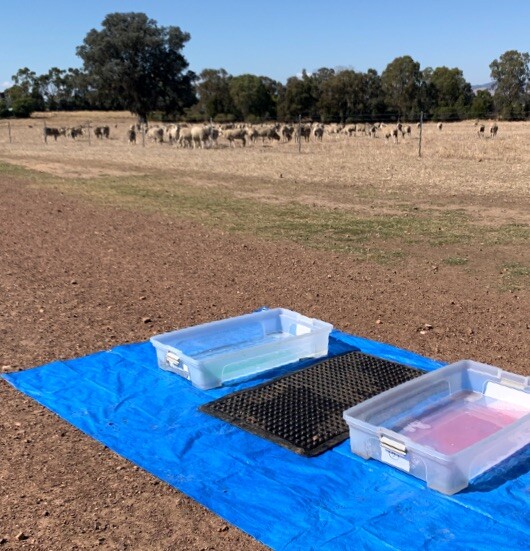Everyday biosecurity practices can help reduce the risk
While the current foot and mouth disease outbreak in Indonesia has focussed attention on emerging biosecurity issues, biosecurity should really be an everyday farm management practice. This article talks about everyday practices that can reduce the risk of pests and disease.

Key messages
- Biosecurity should be an everyday farm practice
- Simple, low-cost measures can prevent pests and disease from establishing on your farm
- If you spot anything unusual, know how to report and contain it.
While the current Foot and Mouth Disease outbreak in Indonesia has focussed our attention on emerging biosecurity issues, biosecurity should really be an everyday farm management practice.
This is because the introduction of new pests or disease to our farming systems increases the management burden, adds to our cost of production and can be financially and emotionally devastating if it results in restricted market access or the destruction of livestock or produce.
Some farms will already have in place biosecurity processes as part of an industry accreditation, while other farms can consider implementing some of the simple measures outlined below.
Control people movements
The movement of people between farms is a biosecurity risk, so having a visitor protocol which includes a visitor register, questions about previous travel and high-risk contacts, can be helpful. Biosecurity signage, locking gates and directing visitors to the farm office will also help limit the unauthorised movement of people around your farm.
Dirty clothes and boots can spread pest and disease, so ensuring visitors are free of dirt, manure and other material is essential (if you are worried about offending visitors, a sign at the office/shed can help explain). For footwear, either provide spare gumboots or shoe covers, or follow a cleaning process that involves cleaning, washing boots in a water bath, followed by disinfection in a second footbath containing a strong sanitising product.
This video shows Riverine Plains Member Engagement Officer, Lynn Macaulay, using a footbath at a Riverine Plains Field Day.
Control vehicle movements
Having a dedicated farm entry point and car park keeps vehicles to set areas and allows you to inspect (and potentially intercept)vehicles.
Utes, harvesters, spreaders, sprayers, tractors and other farm machinery, should be clean before they enter paddocks. All sorts of weeds and pathogens can be carried in soil, grain, dust, manure, hay or in material wedged within machinery, so setting up a wash bayor blow down area can reduce the risk and make control easier if there are any escapes.
Livestock
Manage livestock biosecurity risks by adhering to your Farm Biosecurity Plan whenever livestock arrive from a property with a different PIC.
Fodder and seed
Hay, silage and grain can bring in weeds, insects and fungal, bacterial or viral diseases. When using brought-in fodder and grain, feedout within a containment area and use commodity/fodder vendor declarations to limit the risks. Also, use certified weed and disease-freeseed and ensure it is not sourced from prohibited regions.
Note: Herbicide resistant and other undesirable weeds from bought-in drought fodder was raised at our recent drought preparedness workshops as having significant long-term management consequences.
Crops and pasture
Lax pest control can lead to incursions over fencelines, as well as from further away (think weeds, stripe rust from volunteer cereals or even lice in the neighbour’s sheep!). The message here is to consider how pest and disease might spread and whether additional measures such as break crops, physical separation of crops or animals, chemical or cultural controls, might be needed.
Reporting
Under the Biosecurity Act, 2015, we all have a general duty to prevent, eliminate or minimise any biosecurity risks we encounter. This means watching for unusual pests or diseases, reporting potential issues and minimising the risk of spread. Each state has its own method for reporting; in NSW, visit https://www.dpi.nsw.gov.au/biosecurity/report-a-pest-or-disease while in Victoria, visit https://agriculture.vic.gov.au/biosecurity
Summary
Biosecurity threats can come from anywhere, but key to reducing the risk is to have in place processes that limit the opportunity for pests and disease to enter, while also being able to identify and manage the threat if it does.
- Visit https://www.farmbiosecurity.com.au/ (funded by Animal Health Australia and Plant Health Australia) for more information, manuals, and checklists.
- https://www.farmbiosecurity.com.au/industry/grains/
- https://www.farmbiosecurity.com.au/livestock/
Author
NEWS
Keep up to date with the latest news from across the Riverine Plains.
-
Livestock
-
People
-
Grains
-
Sustainability

